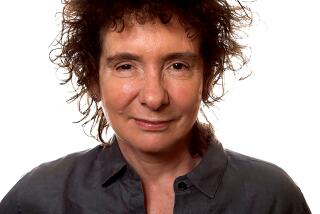WRITINGS ON IRISH FOLKLORE, LEGEND AND MYTHBy...
- Share via
WRITINGS ON IRISH FOLKLORE, LEGEND AND MYTH
By W.B. Yeats
Penguin: 458 pages, $13 paper
Look upon “Writings on Irish Folklore, Legend and Myth” as a chance to cross the divide--with William Butler Yeats as your guide--between disbelief (a world of dark nature with no spirits) and the universe of fairy folk and lore that the poet spent his life studying. If you read no other book than this all year, you will at least have read one that gives you enough to think about for a lifetime. It is only a collection, a smattering of pieces written by Yeats on “the gentry” (fairy folk) and the stories told about them throughout Ireland but mainly in his home county, Sligo.
Yeats was born in 1865 and lived most of his life in London. He died in France in 1939. He wrote all his life about folklore, in newspapers such as the National Observer and the Scots Observer and journals such as Leisure Hour and the Irish Theosophist. Several pieces from those publications are included here, as well as introductions from his own books, including “The Celtic Twilight,” and books of friends. He studied magic, and several of his own communications with the fairy kingdom and with the dead are included here. He records stories of fairy doctors and witch doctors, mostly from Sligo, with its highly respected fairy strongholds, Drumcliff, Drumahair and Ballisdare.
The pieces were collected in 1993 by Robert Welch of the University of Ulster, Coleraine, who had already written several books on Yeats and Irish literature. We all should have read Yeats’ work on magic and fairies, in books like “The Celtic Twilight” (1893) early in our educations, but most of us alive today were too busy learning how to be good empiricists or how to fight communism. We broke with the spirits of nature, but Yeats gives them the shape and vigor of divinities.
Because his writing is so clear and breezy, we are emboldened, reading Yeats, to cry out for what we know by instinct to be true: There is more to the world than what we see! “The various collectors of Irish folklore,” Yeats wrote in 1888 in the introduction to his collected folk tales, “have one great merit ... and one great fault. They have made their work literature rather than science.... To be considered scientists they should have tabulated all their tales in forms like grocers’ bills--item the fairy king, item the queen.” All of literature--Shakespeare, Dante, Blake and the rest--owe their inspiration to this folk lore, Yeats repeats throughout: “Imagination is God in the world of art, and may well desire to have us come to an issue with the atheists who would make us naught but ‘realists.’ Folk-lore is at once the Bible, the Thirty-nine Articles, and the Book of Common Prayer, and well-nigh all the great poets have lived by its light.” Nature is the source of imagination. The fairy world begins us closer to nature.
He deplores the faith-sapping influence of 19th century science and “solid Saxon” influence over the wild Celtic imagination, as well as the stereotyping of Celts as soft and imaginative and therefore inferior. Several British and even Irish writers, such as D.P. Moran, “found it convenient,” writes Welch, “to bracket Yeats with the purveyors of Celtic Twilight effeminacy,” and Yeats responded with letters to editors written with fury and dignity. He wrote, many times, that in other countries, like Scotland, the poets had made “darkness their enemy,” while in Ireland, the people had made peace with their witches and fairies. “In Scotland,” he wrote in 1889, “you are too theological, too gloomy, you have made even the devil religious.”
He distinguishes between cities like Dublin and villages: “It is far easier to be sensible in cities than in many country places I could tell you of. When one walks on those grey roads at evening by the scented elder bushes of the white cottages, watching the faint mountains gathering the clouds upon their heads, one all too readily seems to discover, beyond the thin cobweb veil of the senses, those creatures, the goblins, hurrying from the white square stone door to the north, or from the Heart Lake in the south.”
The one great fault of fairies, he writes, is that they steal children, otherwise, they are without malice, like “‘[f]allen angels who were not good enough to be saved, nor bad enough to be lost,’ say the peasantry.” Fairies have very clear emotions, love or hate, whereas humans, Yeats writes, are always caught up in mixed emotions, “an entanglement of moods which makes us old.” Fairies are, he writes, “Nations of gay creatures, having no souls; nothing in their bright bodies but a mouthful of sweet air.”
The further we reach into our imaginations, the more we know ourselves. Yeats quotes Plato’s “Phaedrus”: “Am I indeed a wonder more complicated and swollen with passion than the serpent Typho, or a creature of a gentler and simplier sort, to whom nature has given a diviner and lowlier destiny?”
More to Read
Sign up for our Book Club newsletter
Get the latest news, events and more from the Los Angeles Times Book Club, and help us get L.A. reading and talking.
You may occasionally receive promotional content from the Los Angeles Times.










